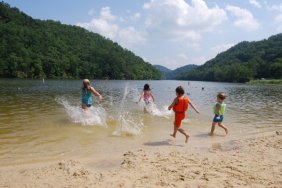 Edges are a common part of the makeup of a body of water. Learning what they are and how to work them to your advantage will give you an angling edge, pun intended. In Parts One and Two of our series on edges, we took a look at pockets and weedlines. Today, we’ll continue with an exploration of how sunken timber constitutes an edge and how you can pick it apart to hook big bass.
Edges are a common part of the makeup of a body of water. Learning what they are and how to work them to your advantage will give you an angling edge, pun intended. In Parts One and Two of our series on edges, we took a look at pockets and weedlines. Today, we’ll continue with an exploration of how sunken timber constitutes an edge and how you can pick it apart to hook big bass.
Timber, which generally consists of sunken trees and laydowns, attracts bass the same way pockets in lily pads do. Not only does wood offer protection from predator and the sun’s rays, but it also offers an abundance of ambush spots. An added bonus is when you find timber in pads or weeds, creating an edge within an edge. It’s like Inception, only with fish.
What you’ll want to keep in mind when you locate sunken timber is not all parts of the log are created equal. Look for forked areas where the main tree and large limbs intersect, as these spots will be prime, especially if the wood drops into deeper water. Such laydowns provide a different type of edge for bass: light and shade. Here, the edge exists in the space where light and open area meets the shade and protection of the tree.
You’ll have great success with a flipping jig or Texas-rigged bait, as they’ll provide the precise presentation you’ll need to move in and around the intricate branches of timber. In some instances, slow-rolling a spinnerbait along the edge of a sunken log can invoke big strikes, as well. One technique I like to use here involves working a soft plastic frog around laydowns. With it, I’ll make my cast parallel to the tree and then mimic a frog trying to hop out of the water onto the log. The commotion this creates attracts fish and is very effective at enticing the big boys to strike.
Edges can be made up of many different elements and are found in various parts of a lake. Seeking them out and knowing how to work them will boost your efficiency and only make you a better angler. Take the tips outlined in this series to heart and you’ll notice a difference in your game on the water.








